
High Peaks Pure Earth presents a guest post by Tibetan scholar Yangdon Dhondup in which she takes a close look at the documentary films of Dorje Tsering.
High Peaks Pure Earth readers might be familiar with Dorje Tsering as a writer and poet, his excellent volume “The Nine-Eyed Agate”, written under the name Jangbu, was featured on the 2012 Winter Reading List.
Dorje Tsering has also made several documentary films and Yangdon Dhondup looks at three of them in her essay, “Tantric Yogi”, “Kokonor” and “Yartsa Rinpoche”.
The excellent documentary “Kokonor” is available online to watch here: http://www.cultureunplugged.com/documentary/watch-online/play/4774/Kokonor
High Peaks Pure Earth wishes to thank Yangdon Dhondup for her essay. Yangdon Dhondup is currently a Research Associate in the Department of the Study of Religions at the School of Oriental and African Studies, London, UK. A shorter version of this essay appears in German in the programme for the 2014 Tibet Film Festival taking place in Zurich later this month where Dorje Tsering’s “Kokonor” will be screened.
“Independent Tibetan Documentary Films: A Review of Dorje Tsering’s Works”
By Yangdon Dhondup
The early 1990s are considered to mark the beginning of China’s “New Documentary Movement”. A number of film makers, including some employees of the state-owned television stations, began to produce independent works that were in stark contrast with the orthodox style of documentary making at that time. What set their work apart was the spontaneous style of shooting, using hand-held cameras, available light, natural sound, and so on. Most importantly, these documentaries portrayed a new kind of reality through empirical observation rather than the official versions of truth and “realism” presented by the state. Social themes, and sometimes even political topics, that were ignored by the official media became the focal points of these works, representing a new kind of reality, aesthetic and spontaneity that is now taken for granted in independent documentaries made in China.
Since the beginning of the 2000s, a growing number of Tibetans have also started producing documentaries. A number of them, such as Phakpa Dhondup, Takla Gyal, Dodrak, Jigme Dorje, Bende Khar and Khashem Gyal, originate from Amdo, the north-eastern part of Tibet. One of the earliest of the Amdo filmmakers to emerge was Dorje Tsering (b. 1963). He is no stranger within the Tibetan literary scene and was a leading avant-garde poet in the second half of the 1980s, when he wrote under the name Jangbu. Known for his experimental and at times obscure poetry, he influenced a whole generation of young Tibetans.
Dorje Tsering’s first documentary, Tantric Yogi (2005), revolves around a tantric practitioner (Tib. sngags pa) from Rebgong (Qinghai province) who plans to participate at a gathering of tantric practitioners that takes place once every 60 years. Tantric Yogi is not a stylized, glossy portrayal of some highly adept mystics carrying out some mysterious and exotic ritual. It is a study of ordinary Tibetans faced with a difficult assignment: how to transport a giant loaf of bread from their home to the gathering site many miles away, where they will present it as an offering to help feed the thousands of participants.
Like his own poetry, Dorje Tsering experiments with the camera. The shots are short, scenes are abruptly cut, and the camera moves with the subject. We can almost feel the bumpy roads on which they are driving and one can sense that the sometimes loose editing of the film might have been a deliberate choice by the director, setting him apart from others who mystify or romanticise Tibet, or Tibetans. Indeed, he once wrote of a documentary about Tibet made by a Han Chinese film maker that in his view “the images portrayed in this documentary, although beautiful and fascinating, are quite weak and empty. I think that no clear explanation is given for the way of life and thinking of the Tibetans, for Tibetan history and culture, nor is any concern shown towards these issues.” Barnett even suggests that his work is not only a “rejection of exoticism”, but also a rejection of “the use of formal aesthetics in its approach to composition and narrative”. For sure, Tantric Yogi is a documentary that depicts the life of ordinary Tibetans – people who are not necessarily special or known for their abilities, but Tibetans with their own aspirations and hopes. Above all, it is a documentary that gives voice to the ordinary Tibetan, thereby reinstating their individuality and subjectivity.
Above: Scenes from Kokonor
Dorje Tsering’s third movie, Kokonor (2008), narrates the painful story of Tibetan nomads living on the shores of Lake Kokonor (Qinghai Lake), a historic Tibetan area in western China. It is an unusually bold study that explores issues of inequality, land eviction, the consequences of mass tourism, and rising poverty. As one of the major “ethnic” tourism destinations in China’s western region, the area around the lake saw a drastic transformation since the 1990s. Its main feature was a massive tourism site built by Chinese entrepreneurs, with the support of the local government, on land traditionally inhabited by Tibetans from the Mokru clan. When the leaders of the community attempt to protest against this illegal land acquisition, they are imprisoned. Children from the Tibetan nomad families living around the sacred lake are shown dressed in colourful costumes, posing for photos with Chinese tourists in order to obtain the little money on which their entire family rely. Dorje Tsering provides us here with a rare glimpse of this marginalised community who is trapped in a cycle of discrimination and poverty. The result is a compelling, multi-layered story about Tibetans who are forced out of their own land, without proper compensation or consultation, and with little evidence of access to education or work opportunities.
Stylistically, Kokonor is distinctive for its genre, with close-ups of emotional exchanges, scenes of children singing or dancing, and rarely seen archival footages. The director wills the audience to identify with the plight and situation of the subjects, creating an emotionally powerful piece in which one can sense the frustration of the Tibetan characters as well as that of the director.
When I asked about the safety of the people taking part in this documentary, Dorje Tsering told to me that, after the people of Mokru community were shown the final version, they told him the documentary was not critical enough. For them, Kokonor was a platform to reach out to the outside world so that they could to tell their version of the story. The director admits that he has left out much material which could have made the documentary more controversial, but even though he currently resides in France, self-censorship plays a role here.
Above: Scenes from Yartsa Rinpoche
His latest documentary, Yartsa Rinpoche (2014), took nearly four years to make and narrates the story of Tsondru, a disrobed monk, who travels to Golok in Qinghai to collect yartsa gunbu (“summer-grass, winter-worm”), a parasitic fungus that can be found in the high grasslands of the Tibetan plateau. This fungus, also referred to as bu (“worm” or “insect”), has become the most important source of income for many rural Tibetans. Used in Chinese medicine, it is said to cure a wide range of illness and symptoms, ranging from fatigue to asthma. The fungus is also believed to boost one’s vitality and to possess power as an aphrodisiac, and demand for the precious fungus is so high in elite circles in mainland China that prices have increased ten-fold between 1997 and 2011. According to Daniel Winkler, an expert on the fungus who also features in the documentary, one kilo of yartsa gunbu can cost up to 600,000 yuan, about $90,000 a kilo, twice as much as the price for one kilo of gold. It is no wonder then that Tibetans go to the high pastures to pick this fungus. As a nomad landowner in the documentary explains: “Yartsa is like money thrown over the grassland. If the money rots in the grass, what’s the use? We should gather the money, it’s useful for us!” Tsondru acknowledges that the fungus has changed his life and says: “We were poor indeed…[but] thanks to yartsa, all our problems have been washed away.”
As an outsider, a non-local collector who comes from a neighbouring prefecture and who therefore does not have the necessary permit to collect the fungus, Tsondru and other harvesters shown in the film are always on the run from local police and government officials who patrol the area. If caught by the authorities, they are sent back to their native place. After a dangerous detour, Tsondru eventually manages to reach the harvest area and to collect the product. With the money he earns from this, he goes to see his girlfriend and her father. To impress the old man, he sings a religious song and says: “If the Dalai Lama and the Panchen Lama come back, we must sing this song to greet them.” Such words could never appear in an official Chinese documentary, and are a subtle reminder of the larger political issues in Tibet.
Yartsa Rinpoche (literally “Precious Fungus” or “Venerable Fungus”) is a cohesive narrative account of Tsondru’s experience, with previously unseen footage of official responses to the chaotic surge of seasonal harvesters from across Tibet. The personal moments, when Tsondru shares his thoughts about life, or when he prays to the deities, are in sharp contrast with the distressingly blunt images of the local cadres, who swear their allegiance to the Communist Party as they hunt for unlicensed harvesters. As someone who has recently moved to the West, Dorje Tsering uses his position as half-insider, half outsider to portray the “yartsa phenomenon” happening right now on the Tibetan plateau, with unusual intimacy.
The immense risks taken by Tibetan harvesters, the increase in wealth for rural Tibetans as a result of the yartsa bubble, the drastic measures taken by the local authorities, and the strong religious beliefs of the Tibetans makes this documentary compelling viewing.
Dorje Tsering’s documentaries touch on issues too sensitive to gain approval from the Chinese authorities, and his works are unlikely ever to be shown in Chinese or Tibetan cinemas or on television screens. But through the technology of DVDs and the internet, some of his films will still reach interested audiences within Tibet.

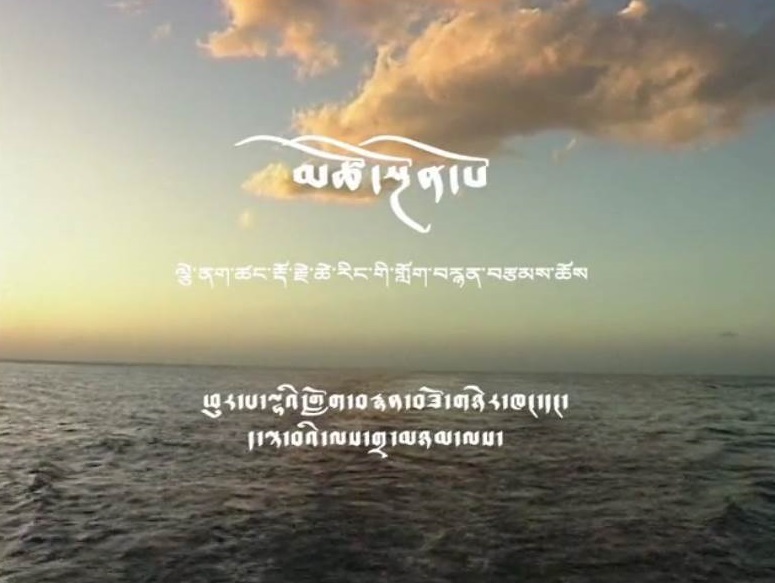



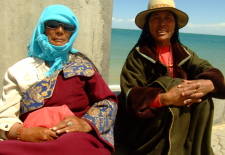

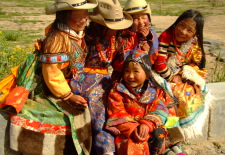
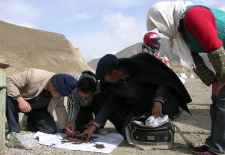
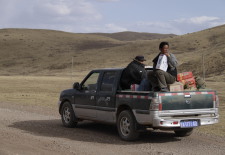
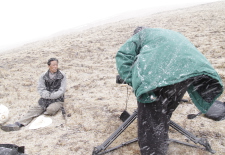

Follow Us!